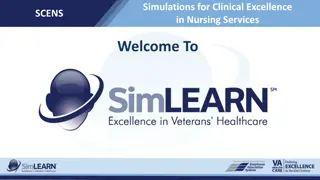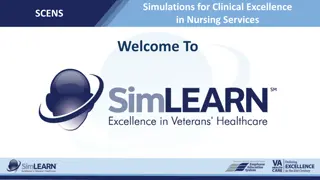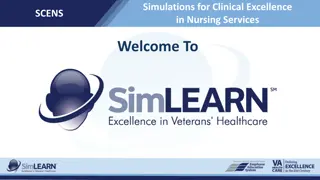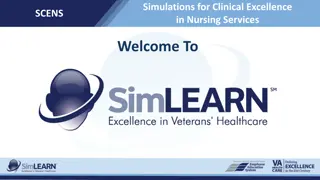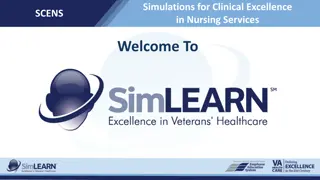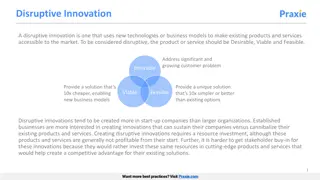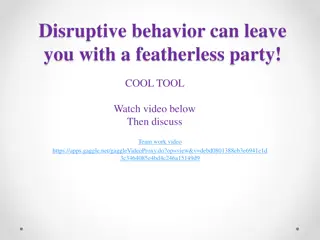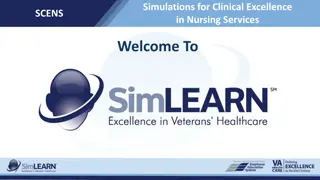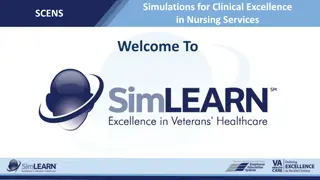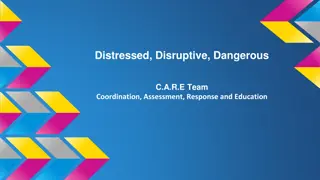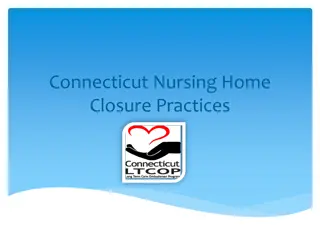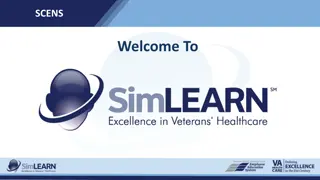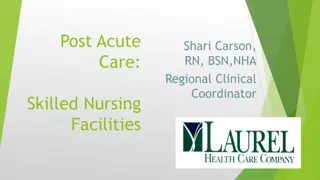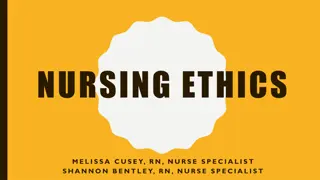Clinical Excellence in Nursing: SCENS Simulations for Disruptive Behavior Management
SCENS provides simulations focusing on Prevention and Management of Disruptive Behavior (PMDB) in nursing services, emphasizing safety protocols and effective communication. The training covers early signs of escalating behavior, stress levels recognition, and interventions to handle disruptive situations proactively. With a focus on prevention and workplace violence, SCENS aims to enhance nurses' skills in de-escalation and risk reduction.
Download Presentation

Please find below an Image/Link to download the presentation.
The content on the website is provided AS IS for your information and personal use only. It may not be sold, licensed, or shared on other websites without obtaining consent from the author. Download presentation by click this link. If you encounter any issues during the download, it is possible that the publisher has removed the file from their server.
E N D
Presentation Transcript
Simulations for Clinical Excellence in Nursing Services SCENS Welcome To
Disclaimer SCENS The sensitivity of the content discussed during this scenario may trigger emotional or physiological responses Please inform the faculty if this is uncomfortable for you
Learning Objectives SCENS 1. Demonstrate the utilization of Prevention and Management of Disruptive Behavior (PMDB) de-escalation principles to establish safety Implement facility specific protocol for the patient exhibiting escalating disruptive behavior Utilize effective communication when caring for the disruptive patient 2. 3.
Why? SCENS Statistics for nurses Joint Commission National Patient Safety Goals Prevention and Management of Disruptive Behavior 2017 Mandatory Training National Database of Nursing Quality Indicators (NDNQI)
PMDB 2017 Mandatory Training SCENS Prevent workplace violence Evolved since the late 1970s Facility level courses Only workplace violence prevention program in the world known to undertake rigorous physical skills evaluation Identify disruptive situations Recognize the signs of an escalating situation Techniques on how to intervene to reduce risk The key is prevention of injuries to self and others
Early signs of escalating behavior SCENS GAINS Mnemonic Gestures Acting Incongruent Noticeable Systematically
Normal Level of Stress SCENS Signs and symptoms Normal heart rate Keeps perceptual field Thinks clearly Interventions Be professional Communicate plan of care or any delays Offer assistance Provide good customer service with respect and in a timely manner
Moderate Level of Stress SCENS Signs and symptoms: High normal heart rate Narrowing perceptual field Altered thinking Interventions: Redirect and indicate that the behavior is not acceptable
Severe Level of Stress SCENS Signs and symptoms: Heart rate near 100 Difficulty processing information Tunnel vision Complex motor skills decrease Limited perceptual field Interventions: Set limits with simply stated directions since problems processing information are evident at this stage.
Panic Level of Stress SCENS Signs and symptoms: Heart rate over 100 Unable to process information Irrational Gross motor skills (strength-based) are at high performance Interventions: Gain coworkers attention Call for assistance Avoid becoming isolated with the person Locate the exit and maintain proximity
Interventions SCENS Do Don t Argue Raise your voice Remain alone in the room with the patient Don t multi-task Call for assistance Code word Remove yourself Excess furniture Neutral party Remove unnecessary patients, staff and visitors Locate the exit Distract the patient Give the patient your full attention Noise level Gut feeling 4
SCENS Survey the environment Know your facility policy Check personal possessions upon admission/entry into facility Be suspicious if items are heavier than normal or that appear altered Locate the exit Potential weapons Cane Flashlights Cell phones Other potentially dangerous items
Facility-Specific SCENS Policies and procedures Protocols Equipment Resources State licensure; scope of practice; certifications; job description Accountability Documentation Disruptive Behavior Reporting System (DBRS)
Priorities SCENS Get help Establish and maintain safety Identify the problem Priority interventions Recognize escalating behavior Anticipate the need for equipment and medications Consider restraints only as a last resort
Potential Issues SCENS Psychosocial Equipment Medication Delays Transfer to another unit/facility Need for restraints
Summary SCENS 1. Discussed the use of Prevention and Management of Disruptive Behavior (PMDB) de-escalation principles to establish safety Reviewed facility specific protocol for the patient exhibiting escalating disruptive behavior Provided effective communication techniques to utilize when caring for the disruptive patient 2. 3.
Disruptive Patient: De-escalation SCENS Rolando Jones 49 year old male presents for an appointment for an unknown reason after traveling two hours. He is accompanied by his significant other. Past Medical History: Post Traumatic Stress Disorder (PTSD), type 2 diabetes, chronic obstructive pulmonary disease (COPD), arthritis, diabetic neuropathy, 30 year one pack per day smoking history, and he drinks a few beers a day Past Surgical History: Appendectomy Bilateral lower extremity shrapnel removal Medications: Metformin 500 mg three times daily with meals Lorazepam 2 mg every 8 hours Albuterol/Ipratropium inhaler 2 puffs four times a day Gabapentin 300 mg three times a day Allergies: Dairy products


